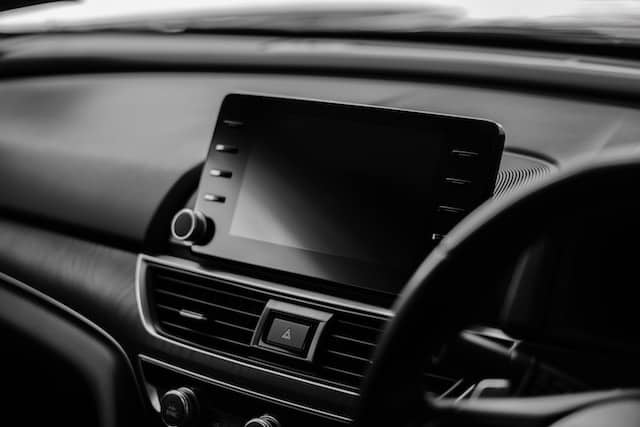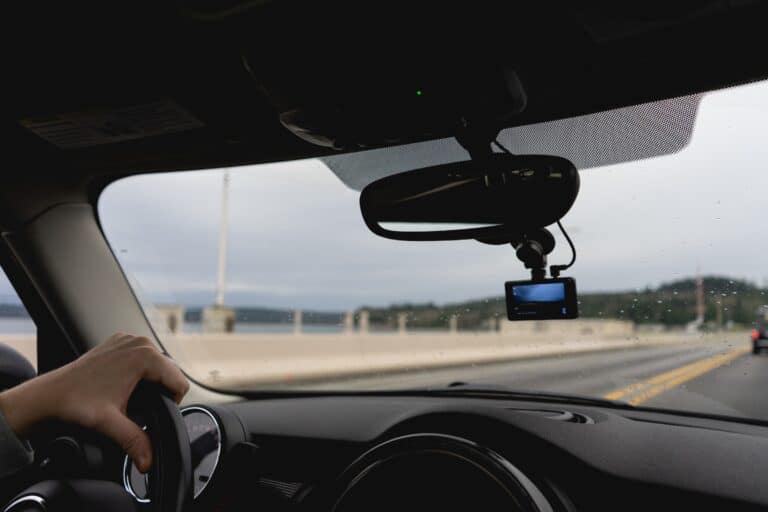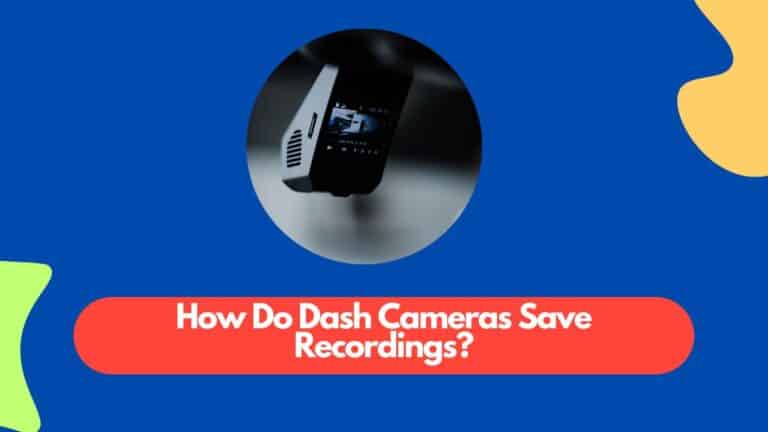How To Use Dashcam As Webcam?
Are you looking to repurpose your dashcam as a webcam? With the rise of remote work and virtual meetings, using a dashcam as a webcam can be a convenient and practical solution. In this article, we will guide you through the process of utilizing your dashcam as a webcam, from choosing the right dashcam to troubleshooting common issues.
So whether you want to enhance your video conferencing experience or simply have better control over your camera angles during online meetings, read on to discover how you can make the most out of your dashcam.
In order to use your dashcam as a webcam, it’s important to select the right dashcam model that is compatible with this functionality. We will discuss various factors like video quality, audio capabilities, and connectivity options that you should consider when choosing a suitable dashcam for webcam use.
Once you have chosen the ideal dashcam, we will walk you through the installation process of any necessary software and drivers needed for proper functionality. Additionally, we will provide step-by-step instructions on connecting your dashcam to your computer via USB or Wi-Fi so that it can be recognized as a webcam device.
By following these instructions carefully and adjusting settings for optimal video and audio quality, you’ll soon be ready to utilize your trusty dashboard companion in an entirely new way – as a reliable webcam!
Choosing the Right Dashcam for Webcam Use
Looking to turn your dashcam into a webcam? Find out how to choose the perfect dashcam for seamless webcam use!
When selecting a dashcam for this purpose, it’s important to consider several factors. Firstly, make sure that the dashcam has a built-in Wi-Fi capability, as this will allow you to connect it wirelessly to your computer without any additional accessories.
Additionally, look for a dashcam with a high-resolution camera sensor, preferably 1080p or higher, so that you can achieve clear and sharp video quality during video conference calls or live streaming sessions.
Read: Best Dash Cam for Live Streaming: Our Top Picks
Furthermore, opt for a model that offers wide-angle lens functionality, as this will ensure that you capture a broader field of view and include more details in your webcam footage.
Lastly, pay attention to the size and design of the dashcam. A compact and discreet design will be easier to mount on your dashboard while minimizing distraction while driving.
By considering these factors when choosing your dashcam, you can transform it into an efficient and reliable webcam for all your video communication needs.
Installing the Necessary Software and Drivers
To get started, you’ll need to install the essential software and drivers for your dashcam to be transformed into a fantastic webcam experience. First, check the manufacturer’s website or the documentation that came with your dashcam to find out if they offer any specific software for using it as a webcam. Download and install this software on your computer.
If no specific software is available, don’t worry! You can still use your dashcam as a webcam by installing generic webcam software such as OBS Studio or ManyCam. These programs allow you to connect your dashcam to your computer and use it as a webcam in various video conferencing applications.
Additionally, make sure you have the necessary drivers installed for your dashcam. These drivers enable communication between your dashcam and computer, ensuring seamless functionality. You can usually find these drivers on the manufacturer’s website under the ‘Support’ or ‘Downloads’ section.
Once you have installed the software and drivers, connect your dashcam to your computer using a USB cable, open up your preferred video conferencing application, select the dashcam as the default camera input, and start enjoying high-quality video calls using your trusty dashcam-turned-webcam!
Connecting Your Dashcam to Your Computer
Once you’ve successfully installed the necessary software and drivers, it’s time to connect your dashcam to your computer for an enhanced webcam experience.
To begin, locate the USB port on your dashcam and the corresponding USB port on your computer. Take the USB cable that came with your dashcam and insert one end into the dashcam’s USB port. Then, insert the other end of the cable into a free USB port on your computer. Ensure that both ends are securely connected.
Once connected, your computer should recognize the dashcam as a new device. You may need to wait a few moments for the drivers to install automatically.
Once installed, you can open any video conferencing or streaming application that supports webcams, such as Zoom or Skype, and select your dashcam as the video source.
It’s important to note that some dashcams may require specific settings or modes to be enabled in order to function as a webcam properly, so consult your dashcam’s user manual for any additional instructions.
With your dashcam now connected and recognized by your computer, you’re ready to enjoy high-quality video footage during all of your online meetings or live streams!
Adjusting Settings for Optimal Video and Audio Quality
To enhance the quality of your video and audio, it’s essential to make adjustments to the settings on your connected dashcam. Start by accessing the settings menu on your dashcam, which can usually be done through a dedicated app or software provided by the manufacturer.
Once you’re in the settings, focus on adjusting the resolution and frame rate for video quality. Higher resolutions like 1080p or even 4K will provide sharper and more detailed footage, but keep in mind that higher resolutions may require more storage space. Adjusting the frame rate can also impact video smoothness, with higher frame rates like 60fps offering smoother playback.
For audio quality, consider adjusting the microphone sensitivity to ensure clear and balanced sound recording. Additionally, some dashcams allow you to adjust exposure and white balance settings for optimal image quality in different lighting conditions.
Experiment with these settings while monitoring their impact on video and audio output until you achieve the desired results.
Troubleshooting Common Issues and FAQs
Having trouble with your video quality? Let’s troubleshoot common issues and answer FAQs to help you get back on track.
If you’re experiencing blurry or pixelated video, make sure that your dashcam lens is clean and free from any smudges or dirt. Adjust the focus settings on your dashcam to ensure clear and sharp video footage.
Another common issue is poor lighting conditions, which can result in dark or grainy videos. Consider using additional lighting sources or positioning your dashcam in a well-lit area for optimal video quality.
If you’re having audio problems, check that the microphone on your dashcam is not obstructed by any objects and adjust the audio settings if necessary.
Lastly, if you’re encountering connectivity issues when using your dashcam as a webcam, ensure that you have installed the appropriate drivers and software for your device. Additionally, make sure that both the dashcam and computer are connected properly via USB cable.
By following these troubleshooting steps and addressing common FAQs, you’ll be able to overcome any issues and use your dashcam effectively as a webcam.
Conclusion
In conclusion, using a dashcam as a webcam can be a convenient and cost-effective option for those in need of a reliable camera for video conferencing or streaming purposes. By choosing the right dashcam model and installing the necessary software and drivers, you can easily connect your dashcam to your computer and start using it as a webcam.
It is important to ensure that you select a dashcam model that is compatible with webcam use. Look for features such as high-resolution video recording, wide-angle lenses, and good low-light performance. Additionally, make sure to check if the dashcam supports being used as a webcam by checking the manufacturer’s specifications or contacting their customer support.
Once you have chosen the appropriate dashcam, follow the installation instructions provided by the manufacturer to install any required software or drivers on your computer. This will allow your computer to recognize and utilize the dashcam as a webcam device.
After installation, connect your dashcam to your computer using the provided USB cable. Your computer should automatically detect the connected dashcam and recognize it as a new webcam device. You may need to adjust some settings in your video conferencing or streaming software to select the dashcam as your preferred camera input.
To optimize video and audio quality during usage, experiment with different settings within both your camera’s settings menu (if available) and in your video conferencing software. Adjust elements such as resolution, frame rate, exposure levels, white balance, audio volume, etc., until you achieve satisfactory results.
If you encounter any issues during setup or usage of your dashcam as a webcam, consult the troubleshooting section of this guide or reach out to technical support for assistance. Remember that each brand and model may have specific requirements or limitations when used in this manner.
Overall, utilizing a dashcam as a webcam can provide an affordable alternative without compromising on quality. With proper research and setup procedures followed diligently from selecting an appropriate model onwards – anyone can successfully turn their dashcam into a reliable webcam device.






